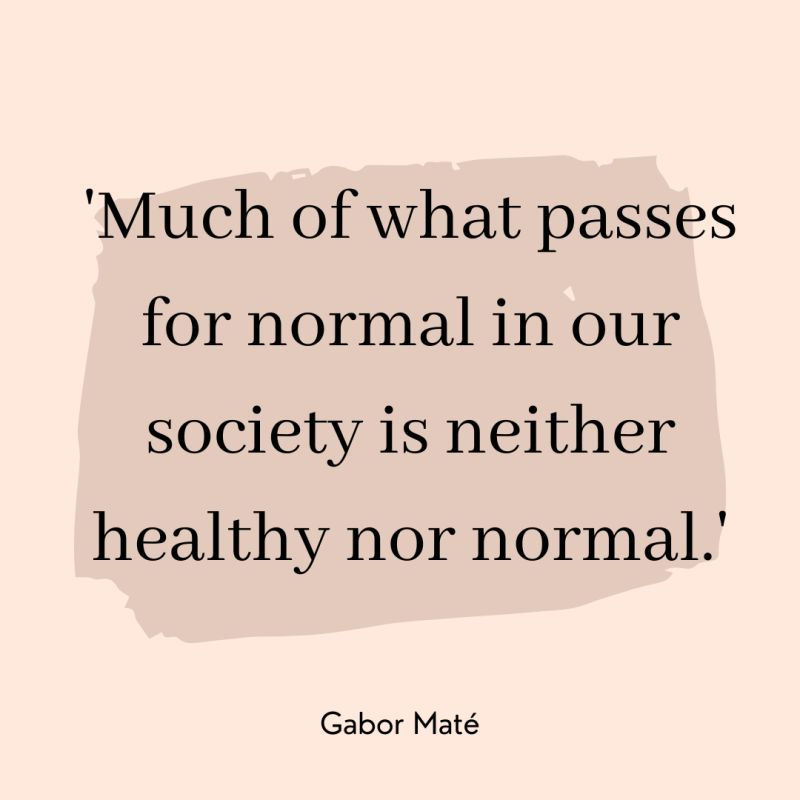The Problem With “Normal": Why We Need to Release the Pressure to Fit In
- lisakinglpc1

- 2 days ago
- 4 min read

How many times a day do we say or think the word "normal"?
“I just want to feel normal.”
“Why can’t they just act normal?”
“Is this reaction normal?”
It is a small, two-syllable word, yet it carries the weight of an entire world of expectations. It is a word we use unconsciously, over and over again, without realizing that we are actually wielding a weapon of conformity.
We use it as a benchmark for success in our classrooms, our workplaces, and our relationships. But the reality is that "normal" is a statistical illusion. It is a finish line that keeps moving, and trying to cross it is exhausting us.
The "Normal" Fallacy
The concept of "normal" implies that there is a standard manufacturing setting for a human being—a default mode of thinking, feeling, and behaving.
But if we pause to look at reality, we see that uniformity is the exception, not the rule. We are born with distinct genetic blueprints. We have brains that wire themselves differently based on biology and experience. We grow up in families with vastly different cultures, trauma histories, and communication styles.
To expect a person with a highly creative, non-linear brain to perform exactly the same way in a rigid corporate structure as a linear, analytical thinker is not just unrealistic; it is unfair. It’s like judging a jazz musician for not following the sheet music of a classical symphony.
Normal vs. Mainstream: A Crucial Distinction
One of the most helpful shifts we can make is changing our vocabulary. We need to stop confusing Normal with Mainstream.
"Mainstream" refers to what is statistically common. It is what the majority of people might do, say, or wear in a specific culture at a specific time.
"Normal" implies "correct." It implies "healthy."
When we tell someone (or ourselves) that we aren't "normal," we are assigning a moral value to our differences. We are saying, “You are broken because you are different.”
If a child needs to move their body to think clearly in a classroom, that might not be mainstream behavior (sitting still), but it is perfectly normal for their specific nervous system. If an adult prefers deep, singular focus over multitasking, that is their brain’s design, not a defect.
When we confuse these terms, we create deep, toxic shame. The person who "marches to the beat of a different drum" begins to believe there is something wrong with the drum itself, rather than realizing they are simply playing a different rhythm than the majority.
The Pressure Cooker of Expectations
Of course, society requires social contracts. We need reasonable expectations for safety and cooperation in schools and workplaces. We can’t just do whatever we want, whenever we want.
However, we can maintain order without demanding uniformity. We can ask for respect in the workplace without demanding that everyone process information at the same speed. We can teach children without demanding they all learn in the exact same modality.
The pressure to appear "normal" forces many people—especially those who are neurodivergent or trauma survivors—to "mask." They spend immense amounts of energy hiding their true selves to make others comfortable. This leads to burnout, anxiety, and a profound sense of isolation.
Embracing the Differences
It is time to retire the obsession with "normal" and replace it with curiosity.
Instead of judging someone for doing things differently, looking differently, or thinking differently, we can ask: “How does their unique brain work?
What does this person need to thrive?”
When we stop looking for "normal," we start seeing people. We start seeing the beauty in the variation. We see that the person who doesn't fit the mold often offers the perspective we were missing all along.
Let’s take the pressure off. You don’t need to be normal. You just need to be you.
References & Further Reading on the Myth of Normalcy
If you are interested in exploring the science and psychology behind why "normal" is a myth and how our brains differ, here are some excellent resources:
1. The Myth of Normal: Trauma, Illness, and Healing in a Toxic Culture by Dr. Gabor Maté
This groundbreaking book challenges the idea that our society’s standard of "normal" is actually healthy. Maté argues that what we consider normal often conflicts with our biological needs, leading to trauma and illness.
2. The End of Average: How We Succeed in a World That Values Sameness by Todd Rose
Todd Rose, a Harvard researcher, dives into the mathematical history of "the average man." He proves through research that no single person actually fits the profile of the "average," and that designing our schools and jobs around this myth harms everyone.
3. NeuroTribes: The Legacy of Autism and the Future of Neurodiversity by Steve Silberman
This book provides a historical look at how we view different brains. It advocates for the "neurodiversity paradigm"—the idea that differences in brain wiring (like Autism, ADHD, etc.) are natural variations of the human genome, not errors to be fixed.
4. Quiet: The Power of Introverts in a World That Can't Stop Talking by Susan Cain
Cain explores how the "Extrovert Ideal" became the cultural "normal" in the West, often overlooking and undervaluing the biology and strengths of introverts.
©Lisa King, LPC




Comments